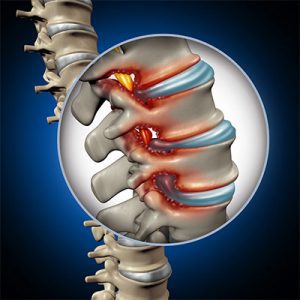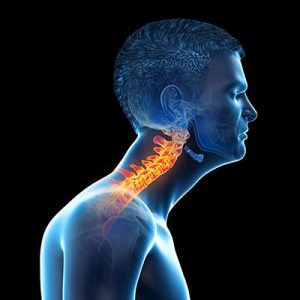What Is Digital Motion X-Ray? How It Works, Benefits & When You Need It

If you’re struggling with unexplained pain during movement, digital motion X-ray might offer answers that standard scans miss. At ChiroSolutions Center, we’ve seen how frustrating it can be when traditional imaging fails to capture what’s really happening in your body. You know something’s wrong – you feel it every time you move – but static X-rays and MRIs keep coming back “normal”. That’s where Digital Motion X-ray (DMX) changes everything.
What Is Digital Motion X-Ray (DMX)?
Digital Motion X-ray represents a revolutionary advancement in diagnostic imaging that captures your body’s structures while they’re actually moving. Unlike traditional static X-rays that freeze a single moment in time, DMX records high-resolution video sequences at up to 30 frames per second, revealing how your joints, ligaments, and bones function during real movement.
This technology goes by several names in the medical field. You might hear it called fluoroscopy, video-fluoroscopy, or dynamic radiography. However, the specific DMX systems we use at our Virginia Beach clinic offer superior image quality and diagnostic capabilities compared to older fluoroscopy equipment.
According to research published in the Journal of Manipulative and Physiological Therapeutics, motion analysis radiography can detect spinal instabilities that remain completely hidden on static imaging studies (Woodfield et al., 2010).
How DMX Works
Real-Time Imaging in Motion
The magic of Digital Motion X-ray happens through its sophisticated capture system. As you perform specific movements – bending forward, turning your head, or flexing your knee – the DMX equipment records 27 to 30 individual images per second. These rapid-fire shots are then compiled into smooth video playback that shows exactly how your joints and surrounding structures behave during movement.
What makes this so powerful is that many injuries and conditions only become apparent when the affected area is in motion. A ligament might hold steady during a static X-ray but show dangerous instability when you turn your head. We can literally watch your spine move and identify areas where normal motion patterns are disrupted.
Low Radiation Exposure
One of the most common concerns patients express about DMX is radiation exposure. I’m pleased to share that Digital Motion X-ray systems are designed with safety as a top priority. The radiation dose is typically comparable to standard X-rays and often lower than traditional fluoroscopy procedures.
Modern DMX equipment uses advanced digital sensors and optimized exposure protocols to minimize radiation while maximizing image quality. Research by Ronnen et al. (2006) in Clinical Radiology demonstrated that digital motion radiography delivers significantly lower radiation doses compared to conventional fluoroscopy systems while providing superior diagnostic information.
Technical Setup
The technical sophistication of DMX involves multiple high-resolution cameras and sensors working in perfect synchronization. These systems capture both internal bone and joint structures as well as external movement patterns simultaneously. This dual perspective allows us to correlate what we see happening inside your body with your actual movement mechanics.
During your DMX examination, you’ll be positioned comfortably while performing simple, pain-free movements. The entire process typically takes just 10-15 minutes, and you’ll be able to see your results immediately on our high-definition monitors.
Key Benefits of DMX
Digital Motion X-ray’s diagnostic power extends far beyond traditional imaging, excelling at identifying movement-related conditions that affect your spine and major joints. Here’s what makes DMX so valuable:
Superior Diagnostic Capabilities
DMX reveals conditions that remain hidden on standard scans:
- Unstable ligament injuries – These represent one of healthcare’s biggest diagnostic challenges, commonly caused by auto accidents or sports trauma
- Chronic pain sources – DMX shows excessive joint movement indicating ligament damage that MRI and CT scans completely miss
- Spinal instability – Research shows cervical spine instability affects up to 25% of whiplash patients but goes undiagnosed in most cases using conventional imaging (Panjabi et al., 2001)
- Abnormal movement patterns – DMX detects vertebral movement problems that signal underlying instability
Enhanced Patient Experience
The visual nature of DMX transforms how patients understand and engage with their treatment:
- See your condition in action – Watch real-time video of what’s happening inside your body during movement
- Better comprehension – Visual evidence helps you understand your diagnosis more clearly than static images
- Increased treatment commitment – Patients who see their condition are more motivated to follow through with care
- Immediate results – No waiting days for results – see your imaging right away
Legal and Documentation Benefits
For cases involving accidents or workplace injuries, DMX provides:
- Objective video evidence – Clear documentation of structural damage or dysfunction
- Compelling legal proof – Visual evidence that static imaging cannot provide
- Professional documentation – Detailed movement analysis for insurance or legal proceedings
Common Conditions Diagnosed with DMX
Digital Motion X-ray excels at diagnosing movement-related problems that traditional imaging misses. Here are the key conditions we can identify and treat:
- Whiplash and Ligament Tears: Auto accidents create rapid forces that damage ligaments while leaving bones intact – making traditional X-rays useless.
- Spinal Instability: High-Risk Areas such as: C1-C2 (upper neck) and Lumbar spine (lower back) – Common after disc injuries
- Joint Conditions Throughout the Body: Knee instability, Shoulder impingement, Ankle instability, TMJ dysfunction.
- Swallowing Disorders (Dysphagia)
*Special Value for Athletes: Precise diagnosis guides safe return to activity by identifying specific movement deviations causing pain.
Conclusion
Digital Motion X-ray represents a quantum leap forward in diagnostic imaging, offering answers for patients who have struggled with unexplained pain and movement dysfunction.
As Virginia Beach’s only Advanced Certified CBP Chiropractor, I combine DMX diagnostic capabilities with Chiropractic BioPhysics (CBP) treatment protocols. This unique combination allows us to not only identify movement dysfunction but also develop precise treatment plans to restore normal spinal biomechanics.
If you’re experiencing persistent pain, especially following an injury, and conventional imaging hasn’t provided clear answers, DMX evaluation might be exactly what you need. The technology’s ability to reveal functional problems during actual movement often uncovers the root cause of chronic symptoms that have puzzled other healthcare providers.
Ready to discover what Digital Motion X-ray can reveal about your condition? Contact ChiroSolutions Center today to schedule your consultation. You can reach us at our Virginia Beach location at 4460 Corporation Lane Suite 102, Virginia Beach, VA 23462, or call us at +1 757-271-0001.
Take the first step toward finally getting the answers – and relief – you deserve. Your body’s movement patterns hold the key to your diagnosis, and DMX gives us the technology to unlock those secrets.

Similar Posts
Free Initial Consultation
Stop living with pain and discomfort. Contact us to schedule your free initial appointment.
Request an appointment online, or call:
757-271-0001







